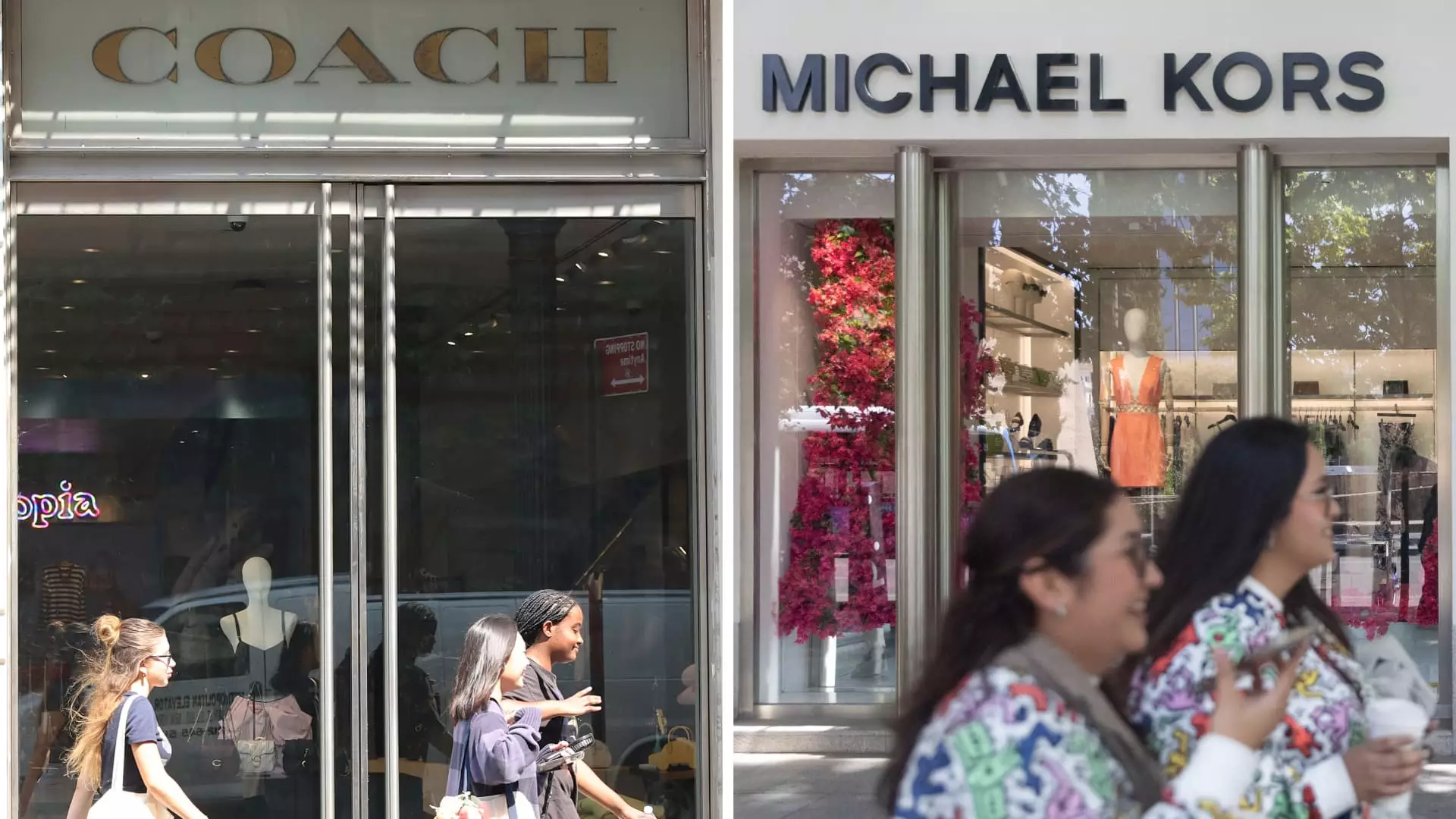The recent ruling by a federal judge to obstruct Tapestry’s acquisition of Capri marks a significant development in the luxury fashion sector. On Thursday, the honorable Judge Jennifer Rochon issued a preliminary injunction at the behest of the Federal Trade Commission (FTC), thus halting a proposed merger that allegedly threatened competitive integrity in the thriving luxury market. This ruling not only alters the dynamics for Tapestry, the parent company of renowned brands such as Coach, Kate Spade, and Stuart Weitzman, but also disrupts Capri’s portfolio that includes luxury giants like Versace, Jimmy Choo, and Michael Kors.
In the stock market’s immediate response to the announcement, Tapestry’s shares saw an astonishing 10% increase, while Capri’s stock faced a staggering plummet of approximately 50%. This sharp contrast reflects investor sentiments concerning the merger’s potential and its implications for financial performance. Tapestry, motivated by this setback, publicly stated its intention to appeal the ruling, branding the decision as both “disappointing” and “incorrect,” arguing that it stifles a competitive spirit in an already fragmented industry. The company is firm in its belief that combining forces with Capri would foster a more robust market presence, enhancing consumer choices rather than diminishing them.
The merger, initially touted at an eye-popping valuation of $8.5 billion, carries significant legal and financial ramifications for both parties involved. Under the stipulations of their merger agreement, Tapestry is obligated to reimburse Capri for expenses incurred should the merger fail to receive regulatory endorsements. This could mean a financial toll ranging from $30 million to $50 million. Capri, conversely, has locked itself into a hefty termination fee of $240 million should it opt out. The stakes are high, fueling tensions as both companies navigate the complexities of federal scrutiny and regulatory expectations.
FTC’s Stance on Competition
Central to the FTC’s challenge against the merger is the argument that consolidation of these two major players could have detrimental consequences for consumers. The Commission contends that such a merger would effectively reduce competition, particularly in the affordable handbag segment, which caters to millions of everyday shoppers. With inflation significantly affecting consumer spending habits, the FTC’s position is particularly salient, advocating for a marketplace where consumers maintain access to competitive pricing on essential goods. Henry Liu, the Bureau of Competition director, emphasized the implications of this ruling, asserting that it protects consumer interests by ensuring ongoing competition.
Reactions from Tapestry and Capri
Tapestry and Capri’s rebuttal to the FTC’s concerns pivot on the argument that they do not predominantly compete with each other. Their lawyers testified that market competition has never been richer, with a multitude of options available to consumers thanks to evolving trends and marketing dynamics—particularly influenced by social media platforms like TikTok. Tapestry, in its position, further advocated that the merger would allow for faster adaptation to trends, bettering their offerings for a consumer base eager for innovation.
The implications of this ruling extend beyond the immediate concerns of Tapestry and Capri, resonating throughout the broader economic landscape. The decision surfaces amid heightened scrutiny from the Biden administration and political figures who stress the importance of competition and price control. The FTC, spearheaded by Chair Lina Khan, has been vocal about its commitment to blocking monopolistic behavior across multiple industries, with retail being a critical arena for scrutiny.
The ruling reflects a prevailing tide in regulatory attitudes toward mergers and acquisitions, particularly in highly concentrated markets where consumer choice is a central focus. As the landscape continues to evolve, it remains to be seen how consumer sentiment and regulatory frameworks will shape the future of these luxury brands.
As Tapestry prepares to appeal the decision, the luxury fashion landscape finds itself at a crossroads. The ongoing saga illustrates the complexities inherent in mergers, especially in an industry characterized by rapid changes and consumer volatility. Stakeholders are closely monitoring developments that could redirect corporate strategies and influence market dynamics in the long-term. Ultimately, the trial raises broader questions about consolidation, consumer access, and the ethical obligations of companies in an increasingly competitive environment, setting a precedent for future interactions between regulators and corporate entities.

